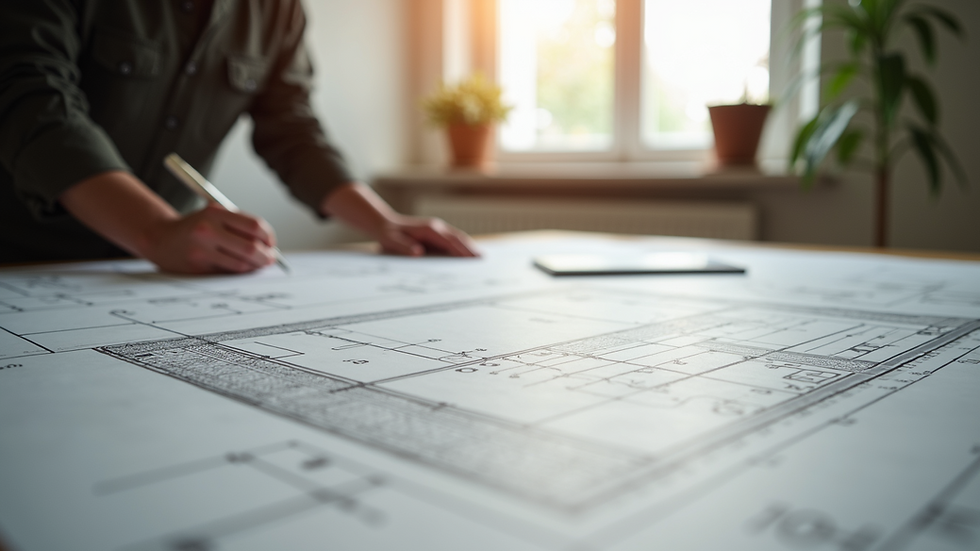Effective Strategies for Construction Project Management
- Matthew R. Jones

- Nov 3
- 3 min read
Successfully managing construction projects requires a blend of clear planning, effective communication, and practical problem-solving. Whether you are overseeing a new build, an addition, or an accessory dwelling unit (ADU), the right strategies can make all the difference in delivering a project on time, within budget, and up to code. This guide offers actionable insights tailored to those involved in residential construction, including real estate investors, contractors, and homeowners.
The Foundation of Managing Construction Projects: Planning and Preparation
Before breaking ground, thorough planning is essential. This phase sets the tone for the entire project and helps avoid costly delays or revisions.
Define clear project goals: Understand the scope, budget, and timeline. For example, if you’re adding an ADU, clarify the size, intended use, and any special features.
Obtain accurate, code-compliant drawings: High-quality architectural drafting is crucial. These drawings serve as the blueprint for builders and ensure compliance with local regulations.
Secure permits early: Delays in permitting can stall progress. Work with professionals who understand local codes and can expedite this process.
Develop a detailed schedule: Break the project into phases with milestones. This helps track progress and identify potential bottlenecks.
By investing time in preparation, you reduce risks and create a roadmap that guides the project smoothly from start to finish.

Key Elements in Managing Construction Projects: Communication and Coordination
Effective communication is the backbone of any successful construction project. It ensures everyone involved—from homeowners to contractors—is aligned and informed.
Establish clear communication channels: Use project management software or regular meetings to keep all parties updated.
Assign a dedicated point of contact: This person handles questions, coordinates schedules, and resolves issues quickly.
Document everything: Keep records of decisions, changes, and approvals to avoid misunderstandings.
Foster collaboration: Encourage open dialogue between designers, builders, and clients to address challenges proactively.
For example, when working with a drafting studio, having one-on-one communication with your drafter can speed up revisions and clarify technical details, ensuring the drawings meet your exact needs.
Leveraging Technology and Tools for Streamlined Project Execution
Modern construction projects benefit greatly from technology that enhances accuracy and efficiency.
Use digital drafting and modeling tools: These provide precise, customizable plans that can be easily updated.
Implement scheduling software: Tools like Gantt charts help visualize timelines and dependencies.
Adopt mobile apps for on-site management: Real-time updates and photo documentation improve transparency.
Integrate cost estimation software: This helps keep budgets in check by forecasting expenses based on current plans.
These tools not only save time but also reduce errors, helping projects stay on track and within budget.

Managing Risks and Unexpected Challenges
Construction projects often encounter unforeseen issues such as weather delays, supply shortages, or design changes. Proactive risk management is essential.
Identify potential risks early: Review plans and schedules to spot vulnerabilities.
Develop contingency plans: Have backup suppliers or alternative materials ready.
Maintain flexibility: Be prepared to adjust timelines or budgets as needed.
Communicate changes promptly: Inform all stakeholders immediately to minimize disruption.
For instance, if a material specified in the drawings becomes unavailable, quick coordination with your drafting team can help revise plans without compromising compliance or quality.
Enhancing Project Outcomes with Expert Drafting Services
High-quality architectural drafting is a cornerstone of successful construction projects. Customized, code-compliant drawings provide clarity and confidence to all involved.
Tailored plans for your specific needs: Whether it’s a new home, an addition, or an ADU, precise drawings reflect your vision and local regulations.
Fast turnaround times: Quick delivery of plans keeps the project moving forward.
Optional add-ons: Electrical layouts and construction cost estimates add value and reduce guesswork.
Real-world experience: Working with drafters who understand construction realities ensures practical, buildable designs.
By partnering with a professional drafting studio, you gain a trusted resource that supports your project from concept through completion.
For more detailed insights on mastering the construction process, explore this resource on construction project management.
Building Success One Project at a Time
Managing construction projects effectively requires a combination of solid planning, clear communication, smart use of technology, and expert drafting support. By applying these strategies, you can navigate the complexities of residential construction with confidence and achieve results that meet your goals and comply with all necessary codes.
Whether you are investing in a new build or expanding an existing property, these approaches help turn your vision into reality efficiently and professionally.



Comments